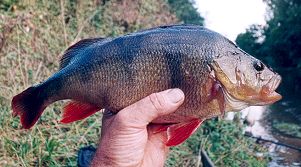A small perch is the first ‘proper’ fish that most of us caught as young anglers, probably because it was silly enough to hang onto the bait until inexperienced hands could fumble some form of strike. Irrespective of the size of the fish, a perch is memorable because it looks the part – the large mouth, striped flanks and spikey dorsal fin could only belong to a bold predator.
These characteristic features are so well known that no-one could mistake perch for another British species, yet the perch family is huge, with many marine and freshwater species worldwide. They all share the paired dorsal fins – the front one usually being spined – and one or more spines on each of the gill covers.

Unusual innards
Internally, the perch is different to most coarse fish because its buoyancy organ, the swim bladder, lacks an air duct. For this reason, perch cannot acclimate quickly to rapid depth changes, and fish caught from deep water may ‘gas up’ and die. Perch eggs are shed as long, sticky ribbons, and it is probable that perch colonise some new fisheries because these eggs are transported on the legs or plumage of water birds.
See-food diet
Perch feed largely by sight, and their eyes can detect light far into the infra-red end of the spectrum. This gives them a distinct advantage over their prey, especially other fish, in low-light conditions – often the time to seek big perch. This may also be the reason for the fish’s well-known haunts near underwater cover, such as bridge footings and submerged bushes. Here, the gloomy surrounding provide perch with ideal opportunities to ambush passing prey.
The diet of perch is catholic, and they eat crustaceans, insect larvae, beetles, aquatic worms, etc. Some biologists believe that in order to grow larger than about 10 inches, perch must be able to switch their diets to small fish.
–*–
If you are interested in cheap perch fishing tackle and bait, please click here.




















